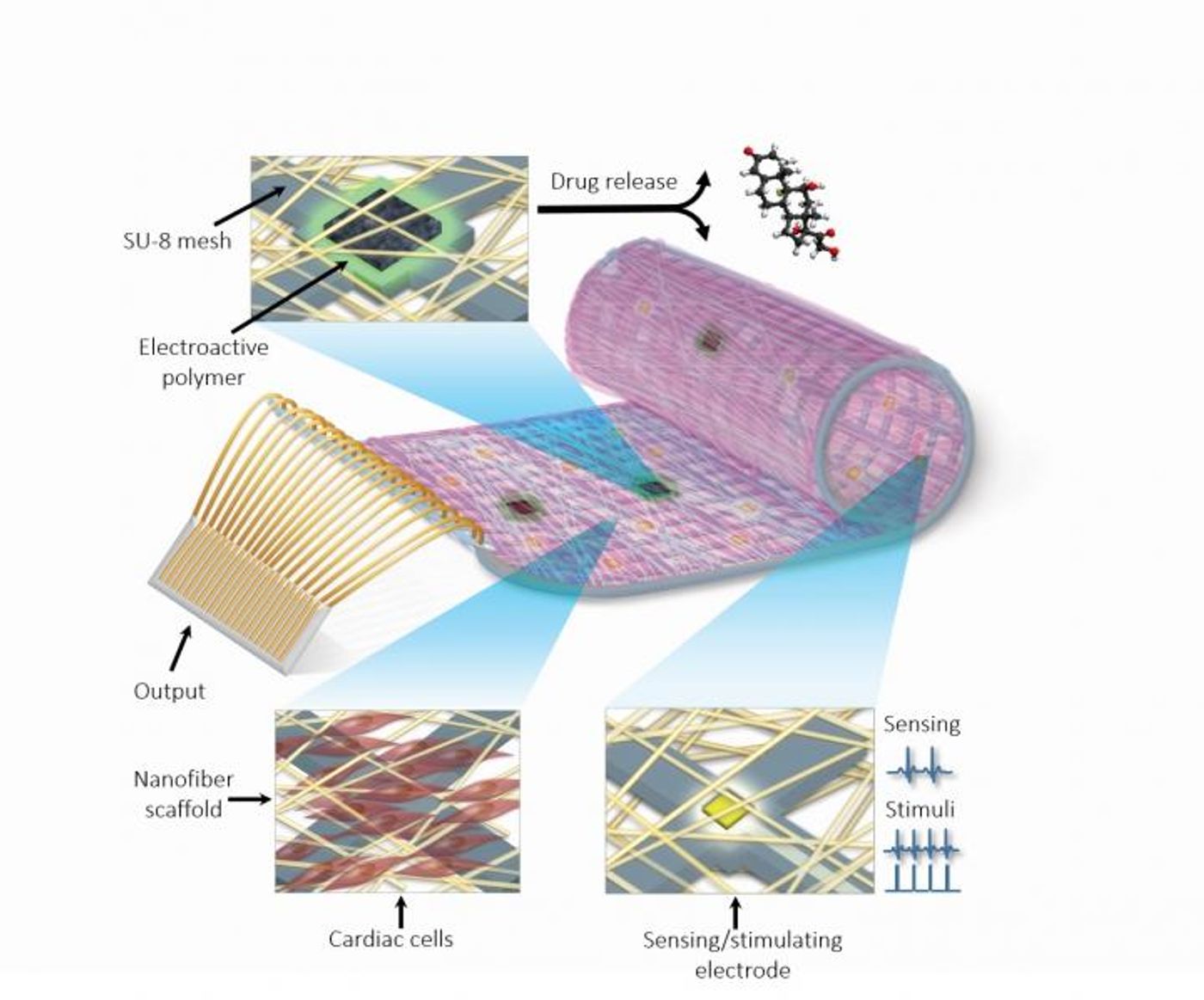Although the idea of a “cyborg heart patch” sounds like a stretch, Tel Aviv University scientists have made this technology a reality, and it could soon save millions of lives as people spend their lives waiting for a heart transplant.
Heart transplants are on the rise, but the technology that Tal Dvir, PhD, has been developing for years could reduce the amount of people that never get the chance for a replacement. The bionic heart patch is made up of both organic and engineered parts that work together to contract and expand like a regular, healthy heart. Although the patch is described as regulating “like a machine,” there is a good chance that this machine could work even better than a normal human heart.
"With this heart patch, we have integrated electronics and living tissue," said Dvir. "It's very science fiction, but it's already here, and we expect it to move cardiac research forward in a big way.” Dvir’s monumental study was recently published in
Nature Materials.
In addition to replacing damaged heart tissue that typically requires a heart transplant to restore function, the bionic heart patch regulates the heart function through remote monitoring post-operation. Even more, the patch is enabled with electroactive polymers to release drugs directly to the heart during a critical time when the body has the potential to reject its integration.
The bionic tissues also sense tissue function with engineered tissue features that provide electrical stimulation in response, the way the cells of a human heart communicate to maintain a regular heartbeat.
"The longer-term goal is for the cardiac patch to be able to regulate its own welfare,” Dvir said. “In other words, if it senses inflammation, it will release an anti-inflammatory drug. If it senses a lack of oxygen, it will release molecules that recruit blood-vessel-forming cells to the heart."
If the success of this technology wasn’t enough to generate high levels of excitement in the scientific community, Dvir is already looking ahead to applying similar technology to the brain and spinal cord problems that cause neurological conditions. However, Dvir did warn to not start “binging on cheeseburgers or quitting sports just yet.”
Source:
Tel Aviv University









